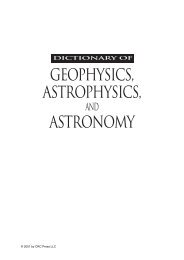tc dokuz eylül university institute of social sciences translation and ...
tc dokuz eylül university institute of social sciences translation and ...
tc dokuz eylül university institute of social sciences translation and ...
Create successful ePaper yourself
Turn your PDF publications into a flip-book with our unique Google optimized e-Paper software.
the footnote that both March Hare <strong>and</strong> the Hatter are idiomatic phrases that describe<br />
madness in English, e.g. as mad as a hatter. Ardıç’s version was translated from<br />
French, so in his text another example is given from that language: “there is an<br />
expression in French, that is, liar like a dentist” (menteur comme un arracheur de<br />
dent), which, however, does not seem to have anything to do with the context. It<br />
might have been translated into French in such a way to describe one <strong>of</strong> the two, the<br />
March Hare or the Hatter as they also keep telling lies or pretending. Perhaps the<br />
French <strong>translation</strong> used the dentist character in place <strong>of</strong> one <strong>of</strong> them in order to<br />
culturally have the equivalent <strong>of</strong> the expression in the British culture. In the Turkish<br />
<strong>translation</strong> translated from French, Nurettin Ardıç writes the explanation both from<br />
the direct source <strong>and</strong> the intermediate language – French <strong>and</strong> English, possibly<br />
translating directly from French as well as checking out the original source text.<br />
Another type from the mad trio is the Dormouse that keeps sleeping <strong>and</strong> wakes up<br />
every once in a while to eat or say something. Its name in the target language brings<br />
to mind only the rodent animal, whereas its intended name originates from the Latin<br />
verb “dormire” meaning to sleep (Maatta, 1997). All these three characters<br />
representing madness with their words <strong>and</strong> actions form the fifth chapter in the story<br />
that is titled as “A Mad Tea-Party”. As can be seen, these three names constitute<br />
wordplay in the source language, while only one <strong>of</strong> them, the March Hare provides<br />
the same association in the target language though the other two are also translatable,<br />
non-proper names.<br />
Another name that represents its character is the Cheshire Cat that has a<br />
grinning expression on its face. The quote "Everyone in Wonderl<strong>and</strong> is mad,<br />
otherwise they wouldn't be down here" said by the Cheshire Cat can be given an<br />
existential meaning. Is it that everyone alive is mad being alive, or everyone<br />
dreaming him or herself away is mad due to the escape from reality? Cheshire is the<br />
name <strong>of</strong> courtships near Manchester in Engl<strong>and</strong>, from which it takes its name, <strong>and</strong><br />
there is an idiom in British culture, “to grin like a Cheshire cat”, although it is not<br />
known where it originated from (Toral Barda, 1998; 125). As seen in the table, the<br />
most common <strong>translation</strong> has been the literal one, while there are others, such as<br />
Ankara Kedisi by Oral, Vankara Kedisi by Çakmakçı <strong>and</strong> Uyar, Van Kedisi by Beşli,<br />
Mater, Cins Kedi by Yeğinobalı, Sırıtkan Kedi by Asımgil, Chester kedisi by Ardıç,<br />
46
















